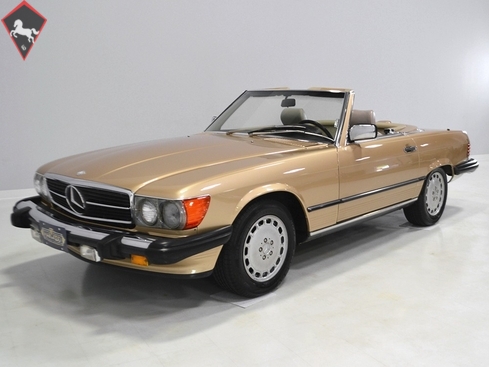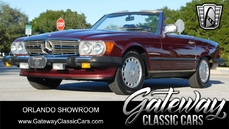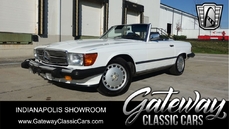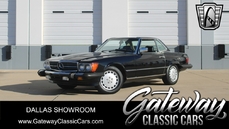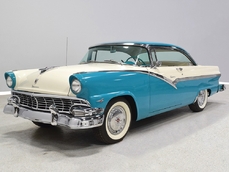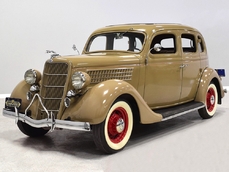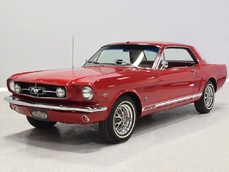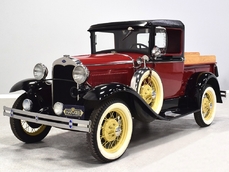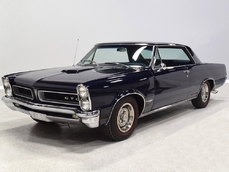Mercedes-Benz 560SL w107 5.6 liter OHC V8 1986
General description :
Elegance. Sophistication. Performance. Affordable? The Mercedes-Benz SL has always represented the finest motoring experience in the world, and in typical Mercedes fashion, they were not only wonderfully built but impeccably dressed with an athlete’s chassis underneath. The R107 series of SLs, aside from perhaps the legendary “Gullwing” are quite possibly the most widely recognized status symbol on four wheels. Owned by movie stars, captains of industry, and other well-to-do people of note, these lovely roadsters came to represent wealth without being ostentatious about it. If you wanted to convey quiet competence and exquisite taste, the SL was your vehicle of choice.
Remarkably, that remains true today, but given the affordable prices on many of the R107 SLs, you no longer need a seven-figure bank balance to put one in your garage. This 1986 560SL represents the pinnacle of R107 development and if you seek one of these cars, it’s exactly what you should be buying. There are cheaper SLs available, but if you do a little research you’ll quickly discover that there are definitely good SLs and bad SLs and that a cheap SL is perhaps the most expensive car you can own if service has been neglected. In contrast, this one has had just one owner and comes to us from his estate, so it’s got a known history. It shows just 84,213 original miles and is in excellent original condition. That’s factory-applied Desert Tan paint (which really looks like gold metallic) that is just the right shade to accentuate the long, low lines of the SL roadster and it remains in excellent condition overall. There are few nits to pick and the only notable one is that the driver’s front fender appears to have been repainted at some point (don’t worry, it’s far less noticeable out in the real world than in our photo studio—we didn’t even spot it until we saw the photos). Otherwise, this car is in very good condition throughout.
Among the many upgrades the 560s received was standard leather upholstery in place of the previous MB-Tex vinyl. While the MB-Tex wears like iron, if you’re spending $65,000 1986 dollars on a new luxury car, leather really should be standard equipment. As a result, the interesting light tan hides in this 560 remain in excellent condition with only the most minor signs of use on the driver’s lower seat cushion, wear that many would call “comfort marks.” Yes, that’s the original interior and it’s got to be a rare combination. There are no splits or tears in the leather and the only notable wear is on the driver’s outer bolster, which isn’t a surpise. An airbag steering wheel was also a new arrival in the 560, eliminating the need for other passive restraints (remember those early motorized seat belts?) and giving it a much more finished look. The gauges should look familiar to anyone who has driven a Mercedes-Benz in the 1970s and ‘80s, and everything is fully functional. Climate control, cruise control, power windows, mirrors, and locks, and all the other accessories are operational, with the A/C being converted to R134a so it’ll be easy to service in the future. An original Becker Grand Prix AM/FM/cassette stereo remains in the center of the dash and still sounds good, and that is, indeed, real walnut on the center console and dashboard. The trunk is outfitted with more plush carpets and includes a full tool kit and the original spare tire that has never been used. The brown canvas convertible top is a brand new Mercedes-Benz piece that fits well and folds easily, and all SLs came with a removable hardtop and a folding stand.
The biggest upgrades to the 560 were under the skin, and the name tells you all you need to know. The 3.8 liter engine of the 380SL was gone, replaced by a 5.6 liter SOHC V8 torque factory. Making 226 horsepower and more than 300 pounds of torque, it transforms the SL from a competent cruiser to a Teutonic muscle car that still feels fast today. Of course, it’s also well-mannered with a bubbly idle that sounds fantastic without being annoying and the last three decades have proven that this engine, if properly maintained, is virtually indestructible. As you’d expect from a car of this quality, it feels strong and durable, and thanks to a recent and extensive service, it’s ready to drive anywhere. It’s extremely clean under the hood, more evidence that it has never seen foul weather beyond a few rain showers over the years. Aside from routine service items, it is completely factory correct under the hood.
The 560 also benefits from a 4-speed automatic overdrive transmission, which gives it incredibly long legs on the highway and there are few better high-speed touring cars than this. The fully independent suspension is supple but competent, never jarring but with higher limits than you’d expect. ABS brakes were standard, too, so they’re there to bail you out if you do something foolish, but given the car’s abilities and demeanor, that’s pretty unlikely. The undercarriage is undercoated and in good order, although not detailed for show, and the exhaust system has an expensive-sounding purr to it that is wonderful to hear on the road with the top down. Correct alloy wheels are in excellent condition and not even stained by brake dust, carrying right-sized 205/65/15 Michelin radials.
This car also includes a full set of manuals, service booklet with stamps, factory tool roll, and first-aid kit.
You have undoubtedly looked at all the other SLs out there and seen them for $16,000. Go ahead and buy one of those low-cost SLs if you want, but be prepared for the staggering cost of repairs and maintenance—remember that a cheap SL is the most expensive car you can own. Or you could buy a good one with a known history, the most desirable of the R107 models with the most horsepower and longest list of features. It’s one of those rare cases where the expensive one turns out to be the smarter investment.
http://www.harwoodmotors.com/vehicles/inventory_details.php?id=793
1986 Mercedes-Benz 560SL w107 5.6 liter OHC V8 is listed sold on ClassicDigest in Macedonia by for $24900.
Car Facts
Car type : Car Make : Mercedes-Benz Model : 560SL w107 Model Version : 5.6 liter OHC V8 Engine size : 5.6 Model Year : 1986 Location : Ohio
Sold
Seller Information
Sold
People who viewed this Mercedes-Benz 560SL w107 also viewed similar Mercedes-Benz listed at ClassicDigest
Other cars listed for sale by this dealer
About Mercedes-Benz
In the annals of automotive history, the journey of Mercedes-Benz is a tale that unfolds with the ingenuity of its founding pioneers. In the year 1886, Karl Benz crafted the Benz Patent Motorwagen, a creation that would go down in history as the world's inaugural automobile. Unbeknownst to him, this moment marked the genesis of what would evolve into the most illustrious premium car manufacturer globally. The financial underpinning of this pioneering venture, interestingly, was provided by Karl Benz's wife, Bertha Benz, demonstrating a remarkable partnership that would set the tone for Mercedes-Benz's legacy.A parallel narrative emerged not far away, as Daimler-Motoren-Gesellschaft, founded by Gottlieb Daimler and Wilhelm Maybach, entered the scene. In 1901, they unveiled their automobile under the now-famous moniker "Mercedes," meaning "godsend" in Spanish. This name was bestowed upon the car at the behest of Emil Jellinek's daughter, the distributor for Daimler-Motoren-Gesellschaft. The wheels of innovation were set in motion.
Fast forward to 1926, a pivotal year that witnessed the merger of Daimler with Benz & Cie., culminating in the birth of Daimler-Benz. The amalgamation saw the adoption of "Mercedes-Benz" as the distinguished trademark for their automobiles, fusing the legacies of two visionary entities into one.
Contrary to perceptions of conservatism, the trajectory of Daimler-Benz unfolds as a chronicle of industry firsts. From the introduction of the honeycomb radiator to the float carburetor, and the pioneering implementation of four-wheel brakes in 1924, Daimler-Benz consistently pushed the boundaries of automotive innovation. The diesel-powered Mercedes-Benz 260 D in 1936 marked the inception of diesel engines in passenger cars. The iconic Mercedes-Benz 300SL Gullwing made history as the first car with direct fuel injection, albeit the Gutbrod's tiny 2-stroke engine can claim precedence.
Safety innovations became a hallmark, with Béla Barényi's patented safety cell design in the "Ponton"-models in 1951, featuring front and rear crumple zones. The W116 450SEL 6.9 saw the introduction of the Anti-Lock Brake system (ABS), another pioneering safety feature. From the first production airbags and beyond, the legacy of "firsts" continued to be etched into the fabric of Daimler-Benz.
Over its centennial journey, Mercedes-Benz has not merely produced cars but has sculpted automotive icons. The SSKL, 710 SSK Trossi Roadster, 770K Grosser, 540K Spezial Roadster, 300SL Gullwing, w100 600 Pullman, w111 280SE 3.5 Flachkühler, w113 230SL Pagoda, w109 300 SEL 6.3, and w201 2.3-16 Cosworth stand testament to the brand's commitment to engineering excellence.
The roaring Silver Arrows, or "Silberpfeile," including the W 25, W 125, W154, W165, and W196, created a legacy of dominance on the racetrack. These machines were not merely cars; they were expressions of precision, speed, and an indomitable spirit that left their competitors in the dust.
As Mercedes-Benz marches into the future, it does so not just as an automaker but as a custodian of a legacy, a torchbearer of innovation, and a beacon of automotive excellence. The road ahead is sure to witness the continued fusion of cutting-edge technology, timeless design, and an unwavering commitment to setting new standards in the world of automobiles.
One luminary figure who left an indelible mark was Béla Barényi, often heralded as the "father of passive safety" for his pioneering work in safety engineering. His patented safety cell design, featuring front and rear crumple zones, became a hallmark of Mercedes-Benz's commitment to occupant safety, setting new standards that reverberated throughout the automotive world.
Moving through the chronicles, the collaborative genius of Wilhelm Maybach, alongside Gottlieb Daimler, laid the foundation for Daimler-Motoren-Gesellschaft. Their innovations not only birthed the first Mercedes but established a culture of relentless pursuit of technological excellence that remains integral to Mercedes-Benz's DNA.
In the post-merger era of 1926, Ferdinand Porsche emerged as a prominent figure within Mercedes-Benz. His work on the Mercedes-Benz S-Type, a supercharged race car, garnered acclaim and set the stage for a legacy that extended far beyond the marque. Porsche's impact would later extend to his eponymous company, but his influence at Mercedes-Benz during those formative years was pivotal.
As the 20th century progressed, the legendary Rudolf Uhlenhaut emerged as a key figure. Uhlenhaut, an accomplished engineer and the driving force behind the iconic Silver Arrows, played a crucial role in Mercedes-Benz's dominance in motorsports. His engineering prowess and attention to detail were instrumental in creating some of the most formidable racing cars of the era.
In the latter half of the century, figures like Bruno Sacco, the head of design at Mercedes-Benz from 1975 to 1999, left an indelible imprint on the brand's aesthetic identity. Sacco's design philosophy, characterized by clean lines and timeless elegance, shaped iconic models like the W126 S-Class and the W201 190E, solidifying Mercedes-Benz's reputation for luxury and sophistication.
The narrative would be incomplete without acknowledging the contributions of engineers like Hans Scherenberg, whose leadership in the 1970s ushered in a new era of technological innovation at Mercedes-Benz. Scherenberg's tenure saw the development of groundbreaking technologies, including the Anti-Lock Brake system (ABS) and the introduction of airbags in production cars.
